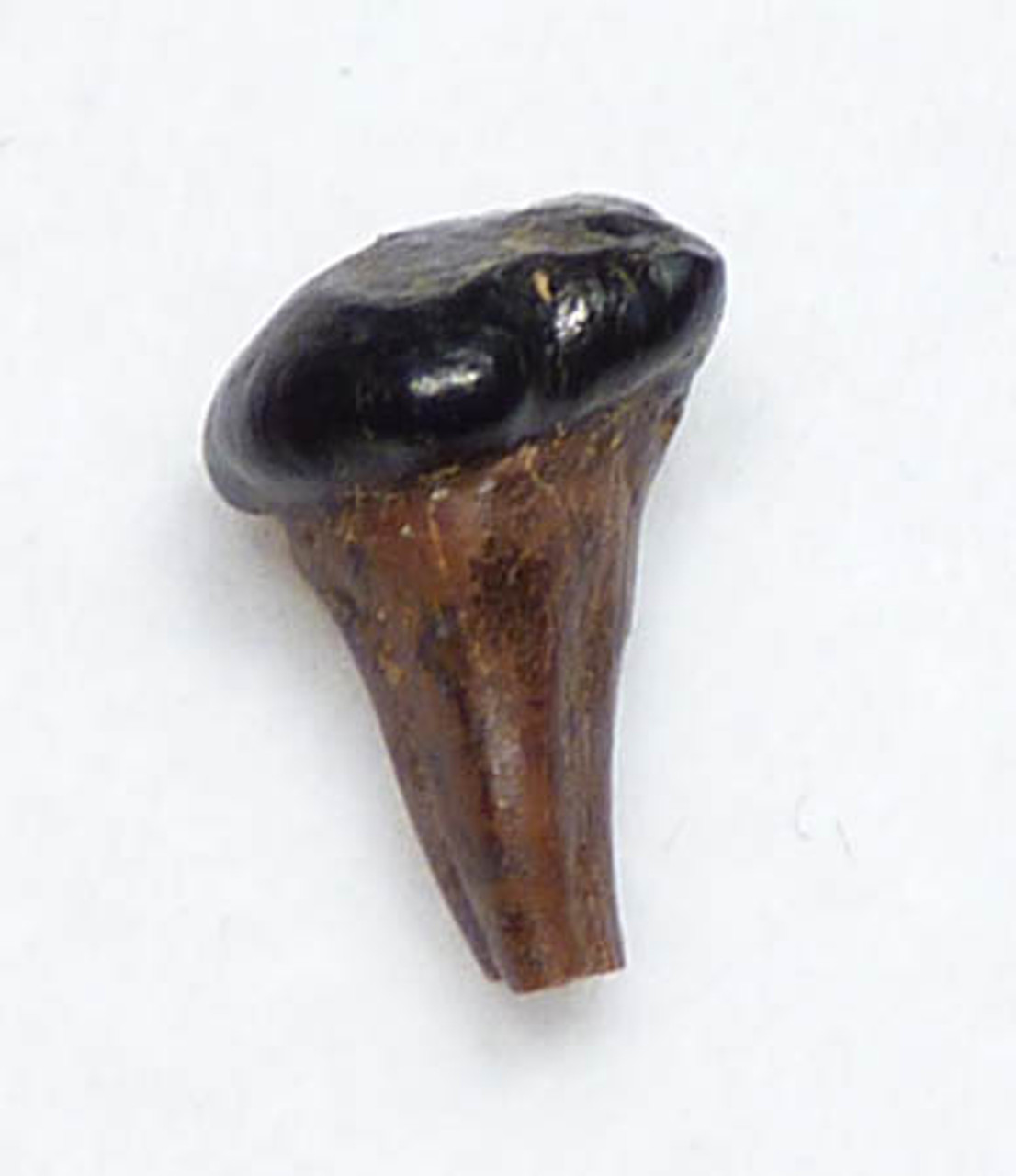Product Description
SEE MORE MESOZOIC MAMMAL FOSSILS
This is an exceptional fossil premolar tooth with root of a Didelphodon sp. mammal from the Cretaceous Period of the famous Hell Creek Formation. The tooth is extremely well-preserved with a crown showing feeding wear but unbroken and complete. A nearly complete unbroken root is also intact! Finding any fossils like this of Didelphodon are EXTREMELY RARE. This is a superb specimen for the discriminating collector.
HISTORY
Didelphodon was one of the largest Mesozoic mammals that ever lived at roughly the size of a large opossum. They were members of the Metatherians which were marsupials, giving birth to under-formed young which were further raised and developed in a pouch. Didelphodon was a predator and ate a specialized diet with its short, extremely robust jaws with unusual crushing teeth in the front. It lived amongst the dinosaurs of the region known as Hell Creek, home to many of the most well-known dinosaurs of our planet's prehistoric past such as Tyrannosaurus rex, Dromaeosaurs ("raptors"), horned dinosaurs like Triceratops, and the duck-billed dinosaurs like Hadrosaurs.
When most people think of the Mesozoic Period, they envision the Earth crawling with all types of reptiles and dinosaurs. The underdogs of this time were the small mammals that emerged and scampered about beneath the feet of some of the planet's largest dinosaurs that ever lived. They also likely scavenged on the carcasses of Tyrannosaurus rex's prey and were most probably prey themselves to many of the smaller dinosaurs including the famous dromaeosaurs ("raptors"). Mesozoic mammal fossils are important remnants in exhibits and collections to fully paint a picture of the varying fauna of the Earth during the days of the dinosaurs. Most fossil collections lack Mesozoic mammal fossils because of their extreme rarity because they are small making them difficult to locate. Another reason for their rarity is the fact that they are fragile, making them rare to survive the fossil process. The specimen we offer here is a highly recommended addition for a well-diversified and educationally valuable collection.
 US DOLLAR
US DOLLAR
 EURO
EURO
 AUSTRALIAN DOLLAR
AUSTRALIAN DOLLAR
 CANADIAN DOLLAR
CANADIAN DOLLAR
 POUND STERLING
POUND STERLING




